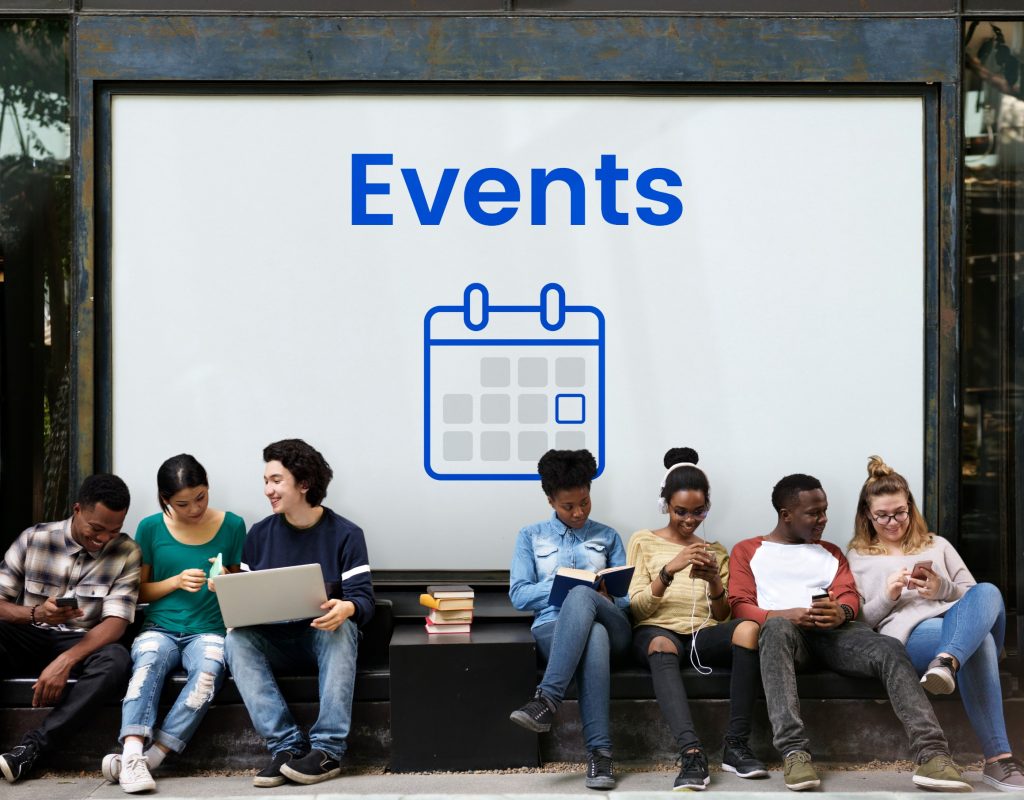In-person events are an excellent method to engage with your target audience and develop relationships. Whether you’re arranging a conference, workshop, or networking event, several factors must be considered when ensuring a successful event.
In this post, we’ll examine some examples of in-person events, offer tips and techniques for organizing and conducting them, and discuss best practices for getting the most out of your event. From the types of in-person events to selecting the correct event technology, we’ll cover everything you need to know to make your in-person event a success.
Importance of in-person events
Virtual engagement is becoming more crucial. Therefore, there is also a need to evaluate face-to-face conversations. Digital communication has changed the way people interact with one another. Physical and immersive in-person contacts have a unique impact beyond virtual space. As the real and virtual worlds merge, individuals and companies must understand these face-to-face interactions’ significant and long-term implications.
Personal encounters are about intense engagement. Virtual interactions extend beyond pixels and displays. These encounters investigate body language, facial emotions, and shared energy. In today’s technologically advanced world, one-on-one interactions are essential. In-person encounters are unrivalled in honesty, whether for business, a conference, or a casual gathering. Physical interactions are challenging to imitate online. Today’s talks are simple, ideas arise quickly, and personal ties grow only via physical contact.
Trust is also developed in person. Face-to-face communication is crucial in today’s interconnected society. These personal interactions foster trust and rapport by sharing experiences and understanding. Trust is required for collaborations, partnerships, and professional relationships, often formed in person. In-person connections that are ethereal yet strong help create social and professional networks, benefiting individuals and businesses.
Despite virtual meetings and digital communication, in-person interactions remain important. This entails realizing that individuals may inspire innovation, creativity, trust, and long-lasting connections. Organizations and people must adapt to today’s rapidly changing environment. Face-to-face interaction is important in this situation. The direct human connection may help individuals and corporations remain ahead.
In-person vs virtual event
While many prefer physical gatherings over online events because they allow for more personal contacts and involvement, they are only sometimes practicable. They can be more expensive, need a more intensive planning procedure, and have clear logistical and geographical limits. As a result, people can only claim that holding an in-person event is always preferable. However, there’s nothing like building community through audience interaction if you have the resources.
Benefits of in-person events
Face-to-face interaction
Attending an event in person offers the significant advantage of the opportunity to interact and develop new relationships. Face-to-face events are an excellent method of extending your business or personal network and making new acquaintances. Many people are drawn to in-person events because they allow them to interact with other people.
Higher engagement
People are more engaged in in-person activities because they are difficult to ignore when they are there. You can observe people’s body language, nonverbal clues, tone of voice, and what they say, which will give you the courage to speak up. Face-to-face contact also helps people avoid misunderstandings, which reduces their willingness to express their opinions or ideas.
Personalized feedback
Face-to-face events allow organizers to do more than build relationships; they also enable them to gather feedback from guests at a deeper level. For example, you may monitor the environment in the conference venue and make any required changes to improve the event’s quality.
Challenges in hosting in-person events

In-person event engagement ideas pose a number of issues for event organizers.
The most obvious obstacle is the expense, which may quickly accumulate to significant amounts. The budget requires careful consideration for everything from venue rents and catering to transportation, lodging, marketing, personnel, and technological needs. For larger events, expenditures might reach tens or hundreds of thousands of dollars, making calculating the return on investment critical.
Logistical complications are also a key challenge when preparing for in-person events. Organizers must handle a variety of detailed issues, including obtaining permissions and licences, scheduling transportation and parking, communicating with vendors and suppliers, assuring perfect venue setup, and handling participant registration and check-ins. Any slip-up in the logistics might taint the whole experience and cast an unfavourable light on the organization.
Aside from financial considerations, the environmental impact of in-person events is also being scrutinized. Large-scale meetings have a huge carbon footprint due to the travel required. Air travel for overseas guests and ground transportation for local participants contribute to the environmental imprint. Furthermore, the energy used to power event logistics, as well as the garbage created by food services, disposable materials, and promotional goods, add to the environmental impact.
Considering these problems is critical for event organizers who want to arrange successful in-person events while remaining cognisant of budgetary restrictions, logistical complexities, and environmental responsibility. By thinking and devising new solutions, in-person events may continue to provide vital opportunities for true interactions and participation.
Popular types of in-person events
The event industry has been in difficulties during the last few years. However, the event forms you’ve been accustomed to and like have remained the same. Here are some instances of always-popular in-person events.
Seminars
Seminars, by definition, are conferences or other meetings for discussion or instruction. In-person business seminars are typically held in huge conference halls, convention centres, or hotel rooms. Attendees assemble to participate in group training sessions or conversations about a defined topic. A discussion or session is often conducted by one or more speakers who steer the discourse and foster dialogue.
People who like live education find in-person lectures extremely helpful. Some people learn better this way, and attending an in-person lecture helps them ask questions and get answers more easily.
Trade show
Trade shows, trade fairs, and exhibitions are all synonyms for the same event.

In summary, a trade show is often held in a huge exhibition hall with firms and booths neatly lined up throughout. Big companies in a certain industry raise their tables with new items or information about new services for other industry leaders or new entrants to consider.
At trade exhibitions, visitors may “study” their competitors and monitor market trends, which is a process that is easier to do in person. The sheer magnitude of these events, as well as the amount of sensory information that an attendee may encounter, are undoubtedly major reasons why many people choose to visit a trade fair in person.
Conferences
Business conference check-in ideas, like trade exhibitions, are often organized around a certain sector or topic of common interest. Conversely, conferences provide a more comprehensive experience than exchanging information, launching a product, or performing a demonstration. They frequently feature keynote speakers, vendor exhibits, and other activities.
Because of the diverse character of this sort of event and the amount of activities in which attendees may engage, conferences are frequently simpler to organize in person. Conversely, conferences lend themselves nicely to a hybrid event style due to the diversity of experience.
Networking events
Networking is one of the primary aims of practically all of the aforementioned in-person event categories; however, networking events are specifically designed to facilitate these relationships.
LinkedIn is an excellent tool for finding and connecting with new people. Individuals attending an in-person networking event look forward to one-on-one encounters. Organizations and other eventgoers in this format frequently encounter new workers, future business partners, and other opportunities while wandering the area.
Workshops
Workshops are short, focused learning and skill development programmes. These events attract fewer people, making them more intimate and engaging. Experts provide topic-specific seminars. As thought leaders offer insights, industry trends, and practical expertise, attendees may absorb and engage in Q&A sessions. Interaction between presenters and participants enhances topic comprehension and collaboration.
Workshops provide hands-on learning opportunities. Trainees can apply theory through case studies, practice, and group activities. Workshops bring together activities, skill development, and peer learning. Professional development seminars and workshops provide professional teaching and hands-on engagement to help participants improve their skills, get practical insights, and form a network of like-minded learners.
Internal events
Internal corporate events include any meeting, conference, or other private event organized and paid for by a firm. The typical objectives of an internal corporate event include staff engagement and alignment, stakeholder and board member education, and information distribution.
Summits
A summit differs from a conference in that it is often reserved for top-level executives or significant people in an organization or sector.
It is usually a one-time, standalone event with a rather specific theme and objective. Typically, you may only attend and speak at a summit if the organizers invite you.
Job fairs
Job fairs are events in which various organizations compete for attendance to fill unfilled vacancies at the same location. Government organizations, schools, or programmes most often sponsor them. Most of the time, firms at job fairs have open positions that they aim to fill with the aid of attendees.
Career fairs
Career fairs are hiring events for organizations seeking to fill several department positions. They allow candidates to chat with company representatives about the culture and future opportunities (even if they aren’t applying for anything at the time). Suppose you arrive at the career fair with a decent “elevator speech,” a 15-to-30-second overview of your abilities and interests. In that case, you may connect with hiring professionals meaningfully.
How do you run an in-person event?
Setting clear objectives
Before beginning the planning process, it is critical to determine the goals of your in-person event. Whether the goal is to educate, introduce a product, collect finances, or make relationships, having defined objectives can help drive all other preparation decisions and guarantee a successful event.
Creating a budget and allocating resources
Establishing a reasonable budget is critical to ensuring that you have enough funds for your event. Allocate monies to various components, including location, technology, marketing, food, and personnel. You may maximize the effect of the occasion without splurging if you manage your funds carefully.
Selecting right venue
The choice of the site has a huge impact on the event’s success. Consider things like location, capacity, facilities, and ambience. A well-suited location creates the ideal mood and gives guests a favourable experience.
Utilizing event technologies
Event technology may help expedite various operations, including registration and ticketing, live streaming, and interactive sessions. Utilize event management technologies, mobile applications, and engagement tools to improve the attendance experience and make your event memorable.
Crafting engaging content
Even in live events, content is king. Create a broad and compelling programme that includes keynote speakers, seminars, interactive sessions, and networking opportunities. Engaging material will keep attendees interested throughout the event.
Attracting and registering attendees
Effective marketing and promotional methods are vital for attracting guests to your event. Use social media, email marketing, and collaborations to reach your intended audience. Streamline the registration process to increase sign-ups.
Promoting events
Building anticipation and enthusiasm for your event is essential. Develop a comprehensive marketing strategy that includes both digital and conventional media. Use narrative, images, and testimonials to demonstrate the event’s value to prospective attendees.
Sponsorships and partnerships
Sponsorships and partnerships not only provide financial assistance but also increase the legitimacy of your event. Collaborate with relevant firms and organizations, providing important exposure in exchange for their assistance.
Safety and Security
When arranging an in-person event, safety should always be the first concern. Implement rigorous security measures and emergency preparations to secure the safety of all guests.
Prepare and train an event team
A skilled and prepared event staff is the foundation of any successful event. Provide extensive training to your team members and give particular duties to guarantee a seamless event implementation.
Execution and management
On the big day, focus on flawless execution and effective management. Maintain a consistent schedule, handle any concerns as soon as possible, and ensure attendees have a great experience.
Measure success and gather feedback.
After the event, measure its success using predetermined objectives. Gather input from participants and stakeholders to determine strengths and areas for development. Use this info to improve future events.
Sum up
Mastering in-person events involves thorough planning, inventive thought, and smooth execution. You can create remarkable experiences that make an indelible impression on guests by combining the power of face-to-face interactions with cutting-edge event technologies.




